An Overview to Strategy and Culture
Back in April, we hosted Engage 2019 - our first-ever Cascade conference. It was a huge hit, and many of you joined us either in person or via our live stream.
Over the next few weeks and months, I'm going to be sharing some of the best learnings from that conference, including full recordings of some of the best presentations and workshops that our attendees got to experience.
Without much more ado, I want to introduce you to perhaps my favorite speaker from the entire event - Regina Perkins (Senior Principal @ The Clearing based in Washington DC).
Regina attacked one of the most challenging topics in strategic execution - bridging the gap between strategy and culture. This is one of those topics that honestly, it's almost impossible to find good actionable content for.
The reason for this is that most aspects of strategic planning and execution are a piece of cake compared to the daunting task of changing the culture of an organization.
Regina begins her presentation by asking a simple question: "How many people have ever experienced any of the following?"
- A sense of 'going through the motions'
- False collaboration - people seem to be working together but are really misaligned
- Lots of talk / Little action
- An awesome strategic plan, but not legs
- Lost inertia - on a spreadsheet
I've yet to meet a single person working in strategy that hasn't encountered at least one of the above in their role. Well, the good news is that Regina has answers for you on how to tackle these things.
And not just 'good on paper' answers - real answers that you can take away and implement in your organization tomorrow.
I won't steal too much thunder from the video - but here are my personal top three takeaways from Regina and her take on bridging the gap between strategy and culture:
- Culture needs strategy & strategy needs culture.
The two are synonymous but more importantly symbiotic. Transformational culture change requires a cohesive strategy. But equally, a strategy developed devoid of cultural awareness will almost always fail. - Internal culture detractors are the biggest risk facing your business.
More so than almost any external threat, the internal threat from people who disrupt your culture can be enough to kill your vision. - Cultural change can be effected in as little as 90 days.
It's hard and it requires tremendous focus, but it's totally achievable when culture transformation is broken down into smaller steps
I'd love to know what you guys think about the gap between strategy and culture, and whether you think you could implement some of the ideas shared by Regina. Leave a comment below and let me know your thoughts!
Here's some background info on Regina for your reference:
Regina Perkins is a leading organizational consultant, master facilitator, executive advisor, strategic planner, and change agent.
Her primary focus is working with executives and leadership groups to effect strategic change, transformation, and growth within organizations.
She specializes in partnering with senior executives to shape and achieve their visions. This work includes leadership development and coaching, organizational assessment and development, performance management and measurement, large-scale facilitation and training, and strategy design and execution.
Ms. Perkins has successfully partnered with senior leaders for more than 25 years in federal, commercial, non-profit, and international organizations.
She employs a wide range of disciplines and methodologies to assist organizations with developing and implementing transformational strategies that engage and empower stakeholders.
These partnerships have resulted in significant increases in strategic alignment, communication, collaboration, and innovation leading to improved performance and realized business results.
Here's a quick synopsis of the presentation:
Leaders and their teams too often develop strategies absent consideration for the culture within which they operate. Strategies cognizant of culture enable leaders to realize transformational change.
In this discussion, Regina Perkins of The Clearing, Inc. -- a Washington, D.C. based strategic consultancy -- will discuss the five key conversations to building successful strategies and how culture underpins all of it.
When looking at organizations who are successful at strategy implementation, their leadership teams are often aligned around five key conversations: the current state of the organization, the environmental constraints that act against them, what is at stake for the organization if the status quo persists, the desired future state, and the strategy that will move the organization from the current to future state.
However, the alignment of those five conversations is not enough. With a shared perspective to the desired future state and the strategy to achieve their objectives, leaders must intentionally account for culture and introduce and enact their strategy within that context.
Defined as the line that separates the behaviors that are tolerated from the behaviors that are not tolerated within an organization, culture is the biggest off-balance sheet asset an organization has.
Culture dictates what plans, strategies, and ideas get enacted. Strategy absent consideration for culture will fail to realize its full potential to create impact and stimulate meaningful change.
Drawing upon deep experience helping organizations develop and implement successful strategies, this talk will explore how culture underpins any successful strategy implementation. We will discuss what leaders can do today to enact a culture shift that advances their own strategy.



.png)

.png)
.png)
.png)
.png)



